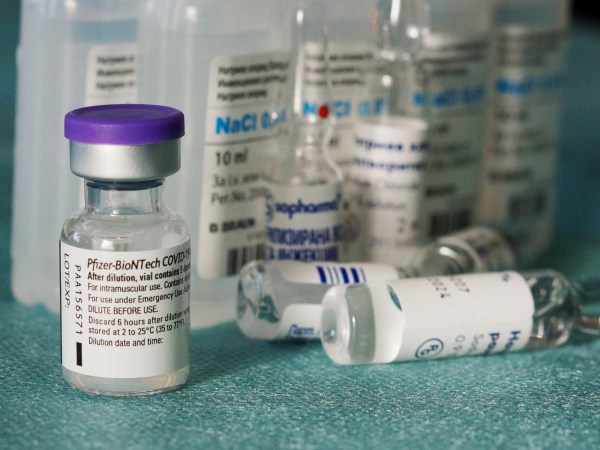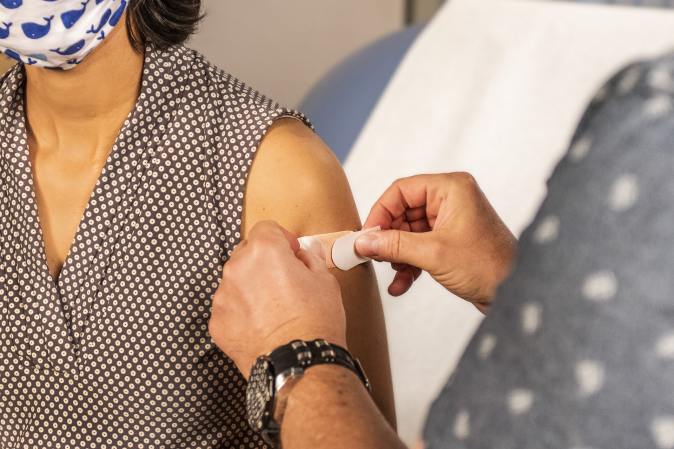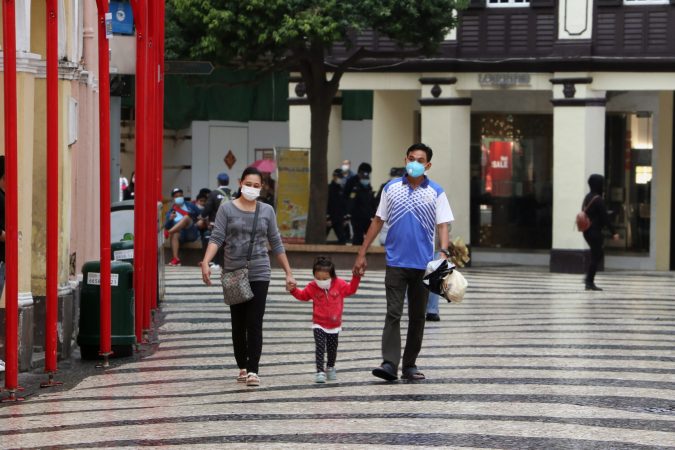

Across Europe, COVID cases are rising once again. Much of the western part of the continent, including Germany, France, the UK, and Italy, are experiencing sustained increases in outbreaks over the last two weeks. Switzerland and Austria are both reporting per-capita case rates that exceed those during the Omicron surge in the US. In Scotland, one in every 14 residents had COVID in the last week. So far, however, deaths haven’t increased across the region.
There are signs that the US could be headed in the same direction. The Centers for Disease Control and Prevention (CDC) reports that in 25 percent of the wastewater surveillance sites it tracks across the country, COVID readings have at least doubled in a week. As the Pandemic Prevention Institute pointed out on Twitter, those counts could just be noisy data—when COVID rates are low, as they are now, doubling isn’t necessarily a significant change.
Local case counts still haven’t increased, but it’s not clear that early markers of a surge would be captured in those numbers. More Americans are using at-home COVID tests, which generally aren’t reported to public health authorities. “I think [wastewater] is a very sensitive barometer of what’s happening, and it may precede actual increased case counts,” says Davidson Hamer, an infectious disease researcher at Boston University who has been advising the Swiss government’s pandemic response.
So why would cases be increasing just as a global wave subsides? In both Europe and the US, a more infectious lineage of Omicron, called BA.2 (sometimes described as “stealth Omicron”)” is spreading rapidly. At the same time, public health officials on both continents have relaxed mitigation efforts, although European protocols were much more stringent than America’s to begin with. Denmark and Switzerland no longer require vaccine verification to enter restaurants. Hawaii is now the only US state with an indoor mask mandate.
Those two forces combined are probably driving the COVID wave in Europe, infectious disease researchers told Popular Science. And because Europe resembles the US in terms of vaccinations, prior outbreaks, and COVID policies, it’s probably a model for another surge here—if not for the human toll an outbreak would take.
BA.2, one of four distinct strains of Omicron, was first detected last fall. It’s similar enough to BA.1, which mostly drove the US’s winter surge of COVID cases, to be considered the same variant, but has enough distinct mutations to behave slightly differently. In particular, it spreads somewhere from 30 to 50 percent faster than the already-quick BA.1, although it doesn’t appear to be deadlier or better at escaping vaccines. (Vaccinated people can catch Omicron strains, but are still shielded from severe illness.)
[Related: ‘Deltacron’ could exist after all]
Early reports showed that the antibodies a person produces in response to other types of Omicron do recognize BA.2, and should protect them from infection, at least for a while. But more recent research has suggested that the Omicron lineages vary enough to require different levels—and probably types—of antibodies. “‘Protective’ isn’t a binary switch,” Kristian Andersen, who studies the evolution of viruses at Scripps Research, writes in an email to PopSci. “BA.1-induced immunity will provide protection against BA.2 infection, but … I expect that effect will wane faster.”
Research on previous waves found that people are extremely unlikely to be reinfected with the same COVID strain within nine months of recovering. But BA.2 might cut that period down significantly.
“With infinitely more cases, yes, it wasn’t the same ratio of hospitalizations. But it’s still absolutely high. A death is a death.”
Susan Hassig, an epidemiologist at Tulane University
Because the first Omicron wave peaked in the US about two months ago, immunity from those infections may have waned enough to give BA.2 a larger population of susceptible hosts. (With an extremely infectious virus, it doesn’t take many susceptible individuals to fuel an outbreak.) In Europe, the initial wave of Omicron came earlier, and BA.2 became dominant in February, so the continent could be a preview of what might happen next in the US.
That, coupled with the increased infectiousness of the subvariant, might explain rising case numbers on both sides of the Atlantic. According to an analysis by Financial Times data scientist John Burn-Murdoch, overall case counts in Europe have grown in tandem with rising BA.2 rates. Right now, BA.2 causes about a quarter of all COVID cases in the US, according to CDC estimates, but that number has grown steadily since January. The Northeast seems to be on the leading edge of that curve. Nathan Grubaugh, an epidemiologist at Yale University who uses viral genetics to investigate disease transmission, tells PopSci that the variant might cause all new COVID cases in Connecticut by mid-April.
But that’s probably only the first part of the equation. “A lot of European countries were seeing an increase in cases right after they released indoor mask mandates,” says Boston University’s Hamer. The faster-spreading variant might have taken off at the exact same time as people began to gather indoors unmasked. The US saw a similar surge after it lowered its defenses in the summer of 2020.
“The timing of this with masks coming off isn’t great,” says Grubaugh, “and I just hope that our leaders and we as a society are willing to put them back on if the cases do indeed start rising.”
Sorting out the exact role of indoor mask requirements or social distancing policies is extremely challenging. “The bottom line is, masking will still slow transmission, no matter which variant it is,” says Susan Hassig, an epidemiologist at Tulane University. “But it’s hard to know how much impact the mask mandates were having before they were dropped. We’ve never really been able to measure that effectively.” People don’t always follow COVID policies when they are in place—and plenty of individuals, especially those at personal risk, will continue wearing a face covering without a mandate, or just stop going into public altogether.
Right now, the CDC’s new guidance only recommends wearing a mask indoors when cases in a US county skyrocket to above 200 per 100,000 residents in a week. Rising hospitalization rates can also trigger mitigation policies. As public health researchers Julia Raifman and Eleanor Murray wrote in the Washington Post earlier in March, those guidelines encourage mask use only after a new surge is well underway. What’s more, the CDC’s updated recommendations don’t explicitly instruct local governments to implement distancing or masking policies, which “has basically given jurisdictions a free pass not to do anything,” says Hassig.
[Related: Masks can work—even if you’re the only one wearing them]
While the experts who spoke to Popular Science agreed that some kind of BA.2 outbreak is likely in the US, their opinion on the consequences are more mixed.
When asked if Europe’s growing outbreak would be followed by a surge of hospitalizations and deaths, Hamer says, “I would be willing to bet no.” Even if BA.2 is able to spread among people who already had another strain of Omicron, they should have built up enough antibodies to avoid severe symptoms. People who are both vaccinated and previously caught Omicron should be even safer.
But Europe has a much more heavily vaccinated population than the US. Roughly two-thirds of adults in the EU have received a booster dose. More critically, 90 percent of everyone over the age of 50 in the UK has had a booster, and the picture is similar across western Europe. Many of the people most vulnerable in an outbreak are also highly protected. In the US, only 66 percent of those over the age of 65 have been boosted, so the consequences of a surge could be more dire.
Hassig calls the idea that cases and hospitalizations have “decoupled” during recent waves deceptive. Denmark, which has been especially quick to end restrictions at bars, end vaccine requirements, and lift mask policies on that logic, had a per-capita death rate that approached America’s during the Omicron outbreaks. “We had nearly as many people hospitalized in Omicron as we did in other surges,” Hassig says. “With infinitely more cases, so yes, it wasn’t the same ratio. But it’s still absolutely high. A death is a death.”
It’s hard to know whether that means the US will see a wave of hospitalizations like it did when Omicron peaked. Europe is only a week or two into its new wave, which means it’s still too early to use data from there to draw predictions for the states. What’s clear is this: The pandemic isn’t over, even if governments are putting away the tools to fight it.























